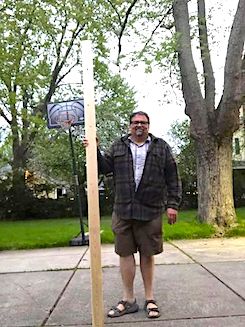We Need to Speak Up About Climate Change
A MiddleWeb Blog

One of the most valuable things I learned in that PLC group – something that really surprised me – was that despite all my social justice warrior tendencies, when it came right down to it, I was viscerally scared to teach anything about climate change.
I could research it, plan it, talk about it until the cows came home – but the thought of actually teaching it put my stomach in knots.
It took time for me to recognize that I couldn’t bear the idea of exposing my kids to the reality that our planet was possibly in its death throes.
We have names for this feeling now…ecoanxiety…solastalgia. And while this terror is not listed among the reasons most teachers don’t teach climate change, I would not be surprised if it was lurking at the bottom of the top-cited reason offered by teachers: “It’s not related to the subjects I teach.”
It was much easier for me to express concerns about my lack of scientific understanding, my inability to teach climate change properly, than it was to pinpoint my existential fear.
So the takeaway of this month’s column is: it’s okay to be afraid of climate change. But don’t be afraid to teach it.
5 Reasons Why We Mustn’t Be Silent
First, the kids already know what’s going on. If Greta Thunberg can speak like this to the United Nations, you do not need to worry about breaking your tween student hearts. They’re likely already breaking. All the more reason, then, to jump in and swim with your kids in these rapidly warming seas.
Second, don’t let the “controversy” stop you. Over 80% of parents believe climate change should be taught in schools.
Third, baby teaching steps are needed and necessary. As always, teachers are not usually adequately equipped to be change agents in their classrooms – which makes it exhausting to contemplate adding one more social issue to the pile for schools to solve.
Don’t overwhelm yourself. Find one lesson, one article, one book. I got at it through nonfiction writing assignments. Eight ways to teach climate change in any classroom are listed here, and there are a lot of other deeper resources out there for you as well. I’d also argue that if there’s one social issue you should address, this is it. No one on the planet is exempt.

And last, there’s hope. I asked my friend and environmental sociologist Joe Henderson to comment on what I could tell middle school teachers about teaching climate change. He wrote back:
1) It’s real. 2) It’s us. 3) We can do something about it.
Thanks to Don Haas and Joseph Henderson, who fight the good fight every day and contributed significantly to this article.



































